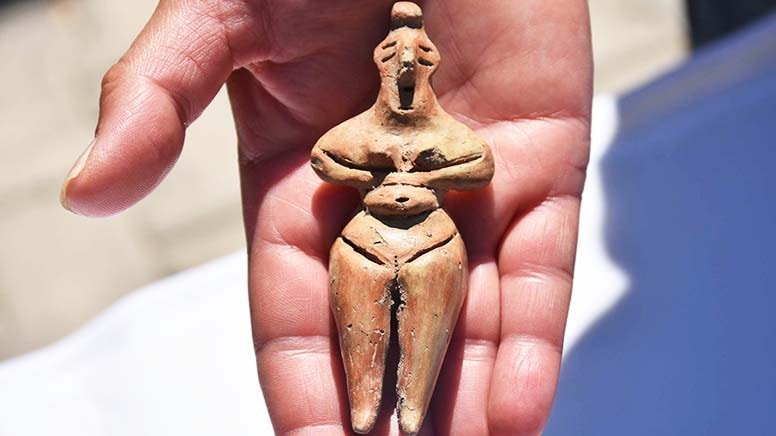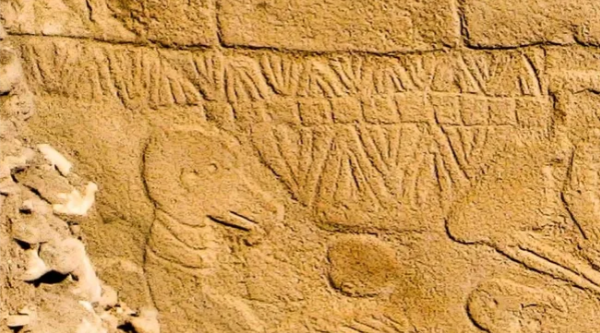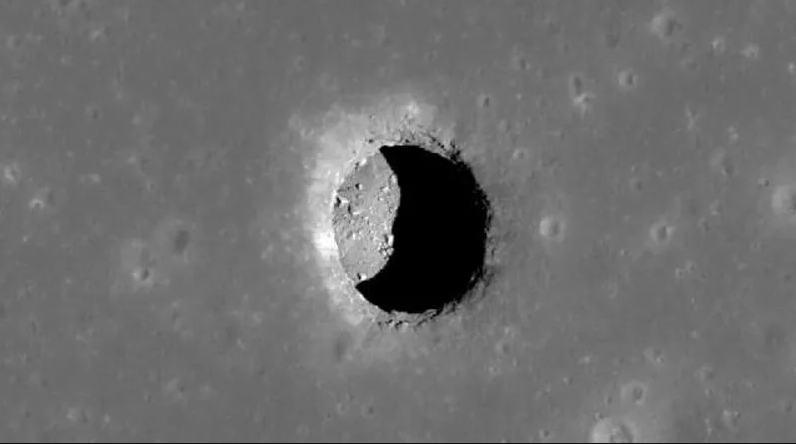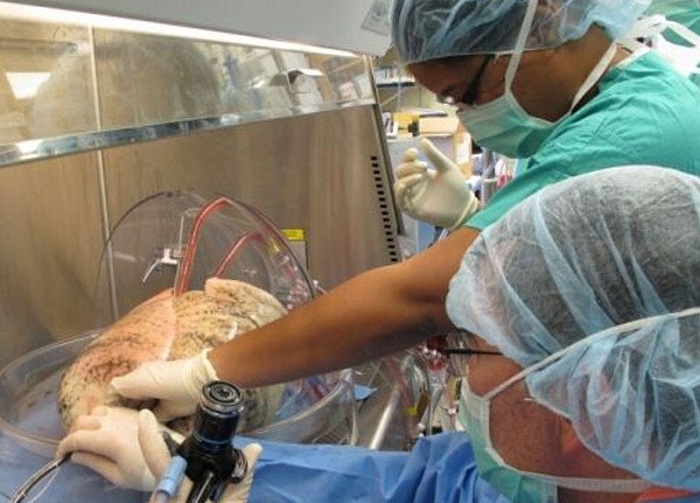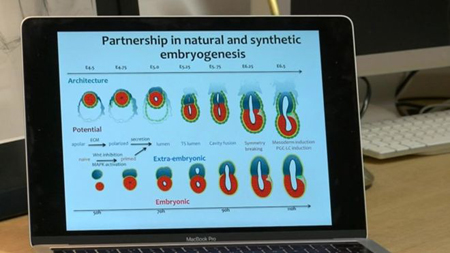
- A-
- A
- A+
Artificial “embryo” created for first time in historic breakthrough
The three-dimensional model of a mouse embryo appeared to be “anatomically correct”
An artificially created three-dimensional model of a mouse embryo at 96 hours, left, and then an embryo cultured in a test tube for 48 hours from the blastocyst stage, right. The red colour denotes the embryo-like structure while the blue shows extra-embryonic material that would form the placenta. Sarah Harrison and Gaelle Recher, Zernicka-Goetz Lab, University of Cambridge.
An artificial embryo-like structure has been created in the laboratory for the first time in a historic breakthrough that could shed light on the “magic” behind the creation of life.
Researchers at Cambridge University were able to make what looked like an early “anatomically correct” mouse embryo.
While stressing it was “nowhere near” something that could grow into an actual animal, one of the scientists said this would “without a doubt” eventually be possible.
The same technique could potentially be used to build an artificial model of a human embryo, which might help scientists work out reasons why some early embryos fail to develop in the womb.
Professor Magdalena Zernicka-Goetz, who led the research, said: “Both the embryonic and extra-embryonic cells start to talk to each other and become organised into a structure that looks like and behaves like an embryo.
“It has anatomically correct regions that develop in the right place and at the right time.”
Fellow researcher Sarah Harrison, a PhD student, said using human stem cells to create a similar structure in the lab was “something certainly to explore”.
“Again it would be a model, it would never be the real thing … [but could be] something that’s going to help us discover what leads to pregnancy failure,” she said.
The researchers said the cells seemed to organise themselves into the right structure after a three-dimensional scaffold on which they could grow was built for them.

 Elm TV
Elm TV
 Photo
Photo
 Video
Video
